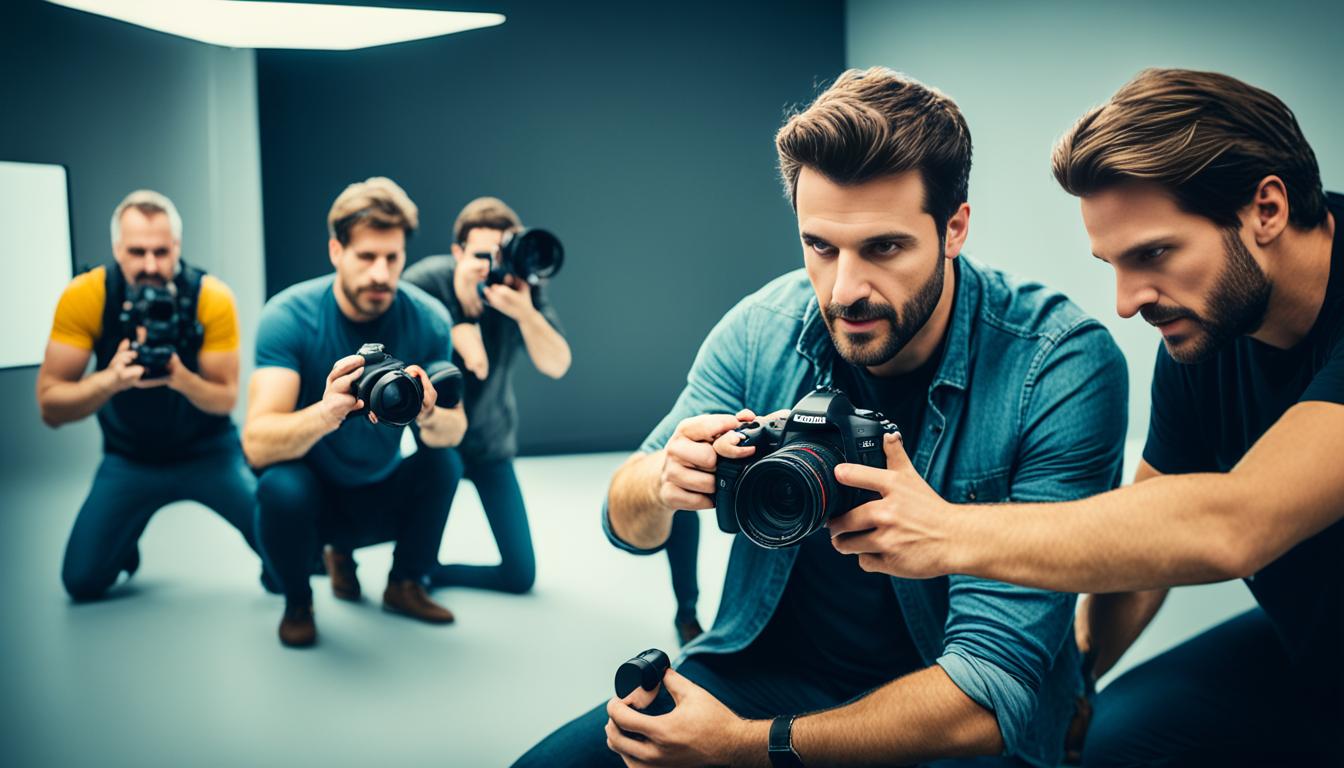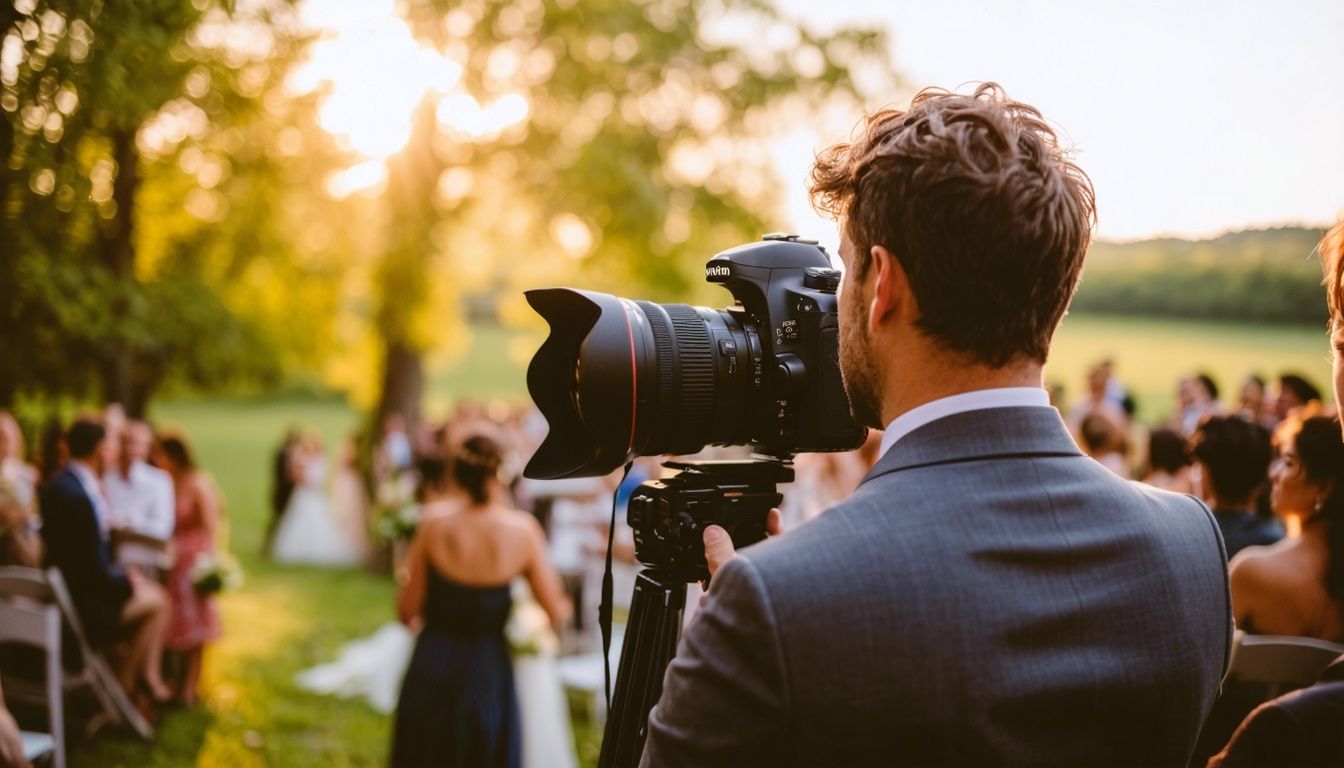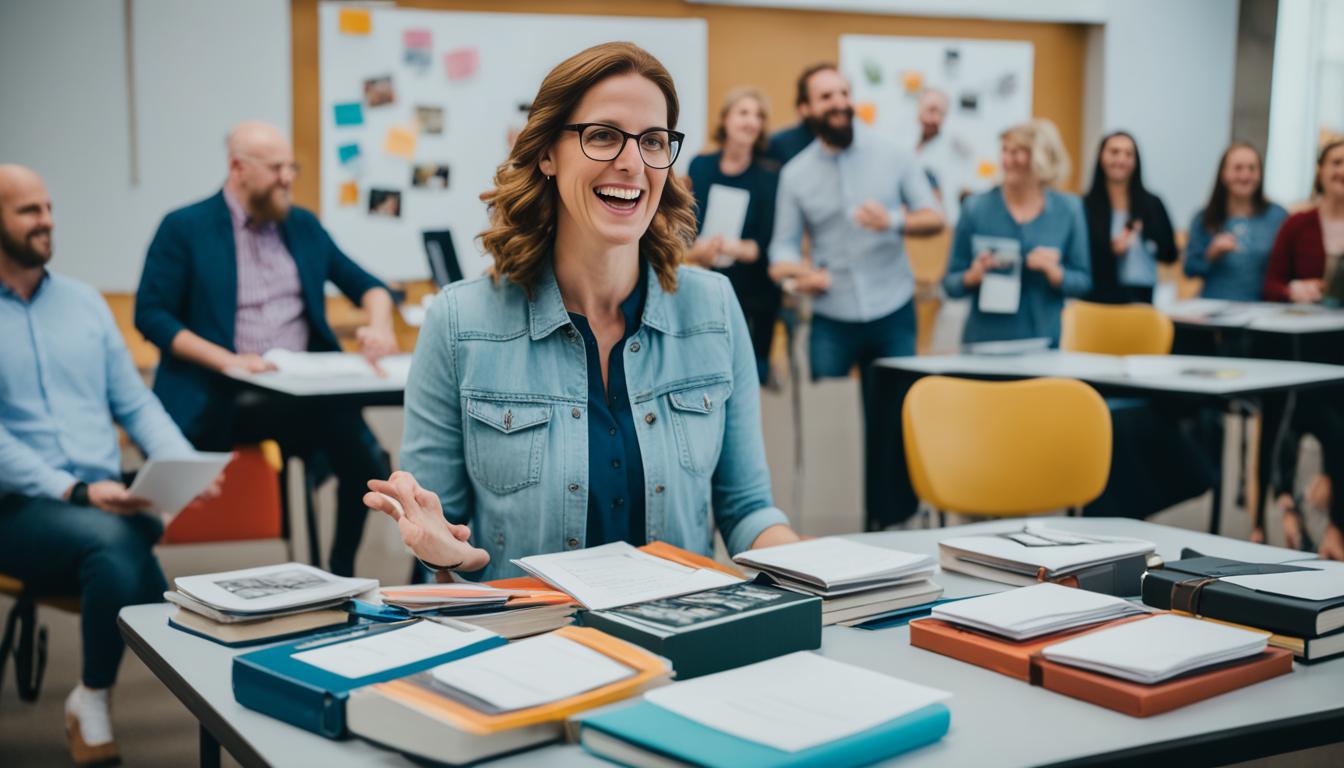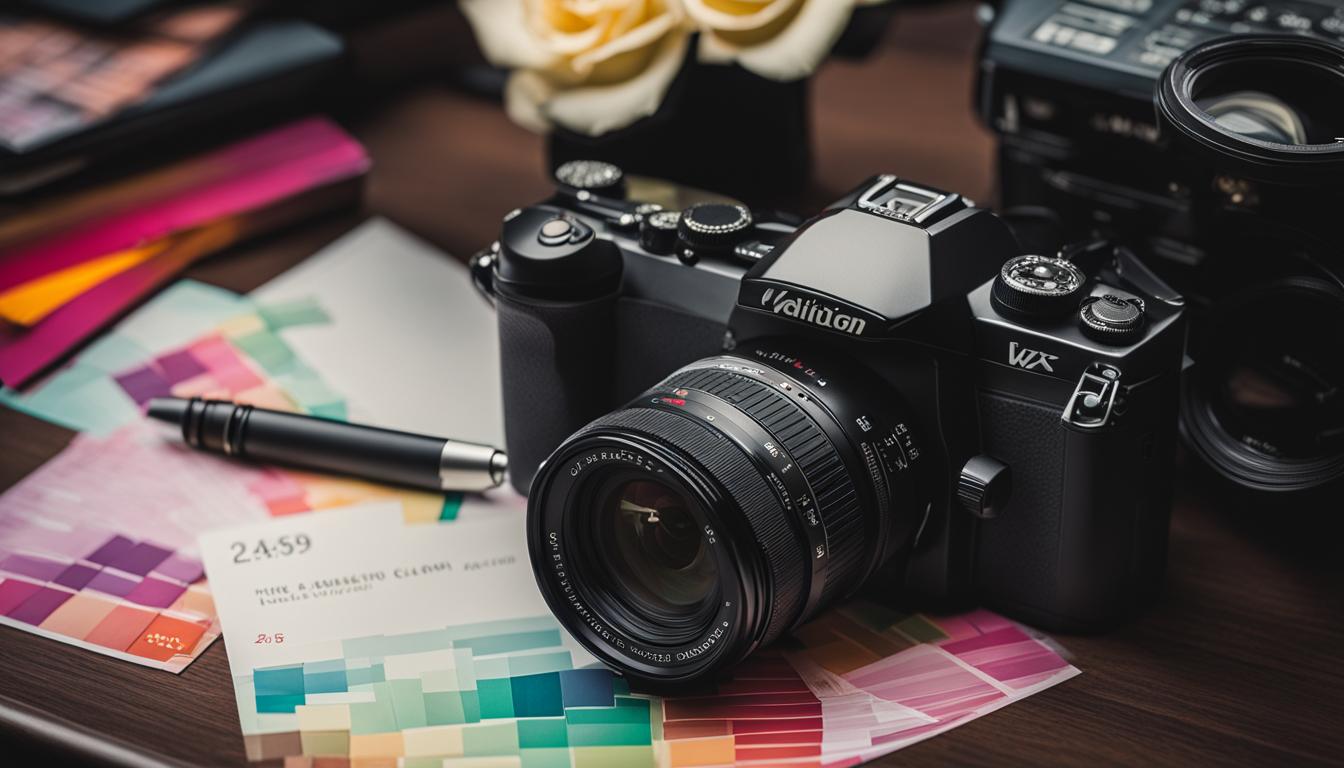Welcome to our guide on second shooter roles and responsibilities in wedding photography. As aspiring photographers, we understand the importance of gaining experience and building a strong portfolio in the industry. Second shooting provides a valuable opportunity to do just that, while also contributing to capturing every precious moment of a couple’s special day. Let’s explore the world of second shooting and how you can navigate the team dynamics as a second shooter.
Key Takeaways:
- Second shooting at weddings offers a chance to build a portfolio, gain experience, and earn money while establishing your own photography business.
- Finding second shooting opportunities can be challenging, but showcasing your professionalism and value can open doors.
- Building relationships and gaining trust with lead photographers are crucial for securing second shooting gigs.
- Collaborating effectively with the lead photographer, being well-prepared, and embracing a learning mindset contribute to successful second shooting.
- Second shooting is a rewarding journey that offers invaluable experience and learning opportunities for aspiring wedding photographers.
The Challenges of Finding Second Shooting Opportunities
Aspiring second shooters often encounter obstacles when searching for opportunities within the wedding photography industry. Many send out emails to local photographers expressing interest in second shooting, only to receive no response. The reason behind this lack of reply lies in the fact that some photographers prefer to work with experienced individuals who can seamlessly jump in and capture shots without much direction. Additionally, some photographers exclusively rely on their trusted business-owning peers as second shooters, making it difficult for newcomers to break into the industry. However, with the right approach, aspiring second shooters can overcome these challenges and showcase their value to lead photographers.
To increase your chances of finding second shooting opportunities, it is crucial to gain more experience and position yourself as a valuable addition to a lead photographer’s team. Here are a few strategies you can employ:
- Consider working with budget photo companies: Collaborating with budget-friendly photography companies can provide you with valuable experience and opportunities to hone your skills. These companies often cater to couples on a smaller budget and may be more open to working with aspiring second shooters.
- Utilize online platforms: Websites like Craigslist or Facebook can be effective in finding second shooting gigs with couples who have a limited budget. Regularly check these platforms for relevant opportunities and reach out to those in need of affordable wedding photography.
- Work with lead photographers who haven’t shot weddings: Some experienced photographers may have never shot weddings themselves or may be venturing into the wedding photography business. These individuals may be more open to working with aspiring second shooters, offering you a chance to gain experience and build your portfolio.
Building trust and showcasing professionalism are vital for securing second shooting opportunities. By gaining experience, demonstrating your value, and taking the initiative to connect with lead photographers, you can prove yourself as a reliable and skilled second shooter.
The Importance of Value and Professionalism
As an aspiring second shooter, it’s crucial to value yourself, your time, and your skills. Offering to work for free may not always be appealing to photographers, as it can signal a lack of professionalism and commitment. Entering into a contract with a lead photographer means valuable consideration is exchanged, and it’s important to demonstrate that you take the job seriously.
While some photographers may see working for free as an opportunity to train someone, it’s essential to establish your worth and seek opportunities where you can gain experience while being compensated. Understanding the wedding photography market and the average rates in your area can help you position yourself as a valuable second shooter.
Highlighting Your Value
When approaching potential leads, highlight the unique skills and qualities you bring to the table as a second shooter. Communicate your ability to capture additional angles, moments, and perspectives that enhance the overall wedding photography coverage. Emphasize your proficiency in handling equipment, managing lighting conditions, and maintaining a high level of professionalism throughout the event.
“A valuable second shooter is someone who can seamlessly collaborate with the lead photographer, deliver exceptional results, and contribute to capturing the essence of the wedding day.”
Demonstrating Professionalism
Showcasing professionalism is essential to establishing trust and credibility with lead photographers. Make sure to maintain prompt and clear communication, respond to inquiries and requests in a timely manner, and follow through on commitments. Arriving early and prepared for each assignment, dressed appropriately, with your gear organized, demonstrates your dedication and professionalism.
“Professionalism is not just about being skilled; it’s about consistently delivering exceptional work and conducting oneself with integrity.”
Knowing Your Worth
Understanding the value of your services and the prevailing industry rates is crucial when negotiating second shooter rates. Research and analyze the photography market in your area to determine reasonable and competitive rates. Consider factors such as your level of experience, the complexity of the project, and the responsibilities and duties expected of you as a second shooter.
By positioning yourself as a skilled and professional second shooter, you can demonstrate your value to lead photographers, increase your earning potential, and forge lasting relationships within the wedding photography industry.
| City | Average Second Shooter Rate |
|---|---|
| New York, NY | $50 – $75 per hour |
| Los Angeles, CA | $40 – $60 per hour |
| Chicago, IL | $35 – $50 per hour |
| Houston, TX | $30 – $45 per hour |
Building Relationships and Gaining Trust
Building strong relationships with lead photographers is a crucial step in securing second shooting opportunities. When seeking out photographers to collaborate with, it’s important to identify those whose work we genuinely admire and photographers with whom we have a good personality fit.
Creating a connection with lead photographers can be achieved through various channels, such as direct messages, email, or attending workshops they offer. By taking the initiative to reach out and express our interest in second shooting, we can start building those valuable relationships.
“Networking within the wedding photography community, attending industry events, and showcasing our professionalism and work can help us establish those relationships and increase our chances of getting more second shooting gigs.”
However, we must acknowledge that gaining trust takes time and patience. Some photographers may only work with a small pool of trusted second shooters whom they have already established relationships with. So, it’s essential to be patient and persistent while showcasing our dedication, skills, and professionalism to earn their trust.
Aside from direct networking, attending industry events and workshops provides additional opportunities to connect with photographers and build relationships. These gatherings allow us to showcase our work and professionalism, giving photographers a chance to see the value we can bring to their business.
| Actions to Build Relationships and Gain Trust |
|---|
| Identify photographers whose work we admire |
| Connect through direct messages, email, or workshops |
| Network within the wedding photography community |
| Showcase professionalism and work |
| Attend industry events and workshops |
Developing relationships and gaining trust within the wedding photography community opens doors to more second shooting opportunities. As photographers become familiar with our work and professionalism, they may be more likely to refer us to their peers or hire us directly for upcoming weddings.

Tips for Successful Second Shooting
To be a successful second shooter, collaboration with the lead photographer is essential. By discussing their style, preferences, and the essential shots they want to capture, we can ensure a seamless coverage of the wedding. It’s important to work together as a team, leveraging each other’s strengths and perspectives to create a diverse and comprehensive collection of images.
When it comes to gear, being well-equipped is crucial. As a second shooter, we should always have a secondary camera body, various lenses to capture different perspectives, and enough memory cards to accommodate the entire event. Additionally, carrying lighting equipment, such as a speedlight or portable strobes, allows us to adapt to challenging lighting conditions and capture stunning images in any setting.
Pre-wedding communication with the lead photographer is vital for a successful second shooting experience. By discussing expectations, timelines, and any specific shots the lead photographer wants us to focus on, we can ensure that we are aligned and prepared for the wedding day. This open line of communication helps us provide the best possible support and contribute to capturing the client’s vision.
Moreover, familiarizing ourselves with the wedding venue is crucial. Whether we can visit the venue in person or conduct thorough online research, understanding the layout, lighting conditions, and key points of interest enables us to navigate the space confidently. This familiarity allows us to anticipate and capture the best moments, creating a cohesive and visually captivating wedding story.
When it comes to photography techniques, being knowledgeable and adaptable in using light is essential. A wedding environment presents various lighting challenges, from harsh sunlight to dimly lit reception halls. As second shooters, we should be comfortable adjusting camera settings, utilizing natural or artificial light sources, and finding creative ways to capture the couple’s special moments in the best possible light.
One key aspect of second shooting is the ability to capture unobtrusive candid photography. While the lead photographer may focus on capturing formal portraits or staged shots, our role as a second shooter involves capturing authentic and spontaneous moments. By blending into the background and observing the interactions between the couple and their guests, we can document genuine emotions and create a comprehensive visual narrative of the wedding day.
Resourcefulness and adaptability are also critical traits for successful second shooters. Weddings are dynamic events, and unforeseen circumstances may arise, such as changes in the timeline or unexpected weather conditions. As second shooters, we should be prepared to think on our feet, adjust our approach as needed, and find creative solutions to capture beautiful images despite any challenges that may arise.
Finally, embracing a learning mindset and enjoying the day are fundamental to personal and professional growth as a second shooter. Every wedding presents an opportunity to learn and improve our skills. By observing the lead photographer, seeking feedback, and reflecting on our own work, we can continuously refine our craft and become better photographers. It’s also important to remember that weddings are joyous celebrations, and as second shooters, we have the privilege of capturing the happiness and love shared between the couple and their loved ones.
| Tips for Successful Second Shooting |
|---|
| Collaborate effectively with the lead photographer |
| Discuss style, preferences, and essential shots |
| Pack the right gear: secondary camera body, various lenses, memory cards, lighting equipment |
| Pre-wedding communication with the lead photographer to clarify expectations and specifics |
| Familiarize yourself with the wedding venue |
| Be knowledgeable and adaptable in using light |
| Capture unobtrusive candid photography |
| Be resourceful and adaptable to overcome challenges |
| Embrace a learning mindset and enjoy the day |
Conclusion
Second shooting is an invaluable experience for aspiring wedding photographers. It provides a unique opportunity to build a diverse portfolio, gain specific wedding photography experience, and learn from established photographers in the field. The journey of being a second shooter may come with its challenges, but the benefits and growth opportunities are worth the effort.
While finding second shooting opportunities can be challenging, building relationships and showcasing professionalism are key factors in securing more gigs. By connecting with lead photographers, demonstrating your value through high-quality work, and fostering trust within the industry, you can open doors to exciting second shooting opportunities.
Collaboration with the lead photographer is crucial for a successful second shooter. Being well-prepared with the right gear, communicating effectively, and having a learning mindset contribute to navigating the dynamics of the photography team. Embracing adaptability, resourcefulness, and a passion for capturing every moment ensures that you make the most of the wedding photography experience.
FAQ
What are the roles and responsibilities of a second shooter in wedding photography?
As a second shooter, your role is to work as an independent contractor for the lead photographer’s business. You will represent the lead photographer’s brand and capture additional angles and coverage of the wedding. Your responsibilities may include capturing candid shots, assisting with equipment, coordinating shots with the lead photographer, and ensuring seamless coverage of the event.
What are the challenges faced while finding second shooting opportunities in wedding photography?
Finding second shooting opportunities can be challenging as many photographers prefer to work with experienced second shooters or their own business-owning peers. Some photographers may not have the time to train someone new. To overcome these challenges, it is important to gain more experience, present yourself as a valuable addition to a lead photographer’s team, and explore alternative avenues such as budget photo companies or platforms like Craigslist and Facebook for smaller budget gigs.
How should I value myself and seek compensation as an aspiring second shooter?
It is crucial to value yourself, your time, and your skills as a second shooter. While working for free may be an opportunity to gain training, it is important to establish your worth and seek opportunities where you can gain experience while being compensated. Understanding the wedding photography market and the average rates in your area can help you position yourself as a valuable second shooter.
How can I build relationships and gain second shooting opportunities in wedding photography?
Building relationships with lead photographers is vital for securing second shooting opportunities. Identify photographers whose work you admire and have a good personality fit with. Connect with them through direct messages, email, or by attending workshops they offer. Networking within the wedding photography community, attending industry events, and showcasing professionalism and your work can help you establish those relationships and get more second shooting gigs.
What are some tips for successful second shooting in wedding photography?
To be a successful second shooter, collaborate effectively with the lead photographer by discussing their style, preferences, and essential shots. Pack the right gear including a secondary camera body, various lenses, memory cards, and lighting equipment. Pre-wedding communication helps clarify expectations, and familiarizing yourself with the wedding venue ensures confident coverage. Knowledge of light and adaptability in challenging lighting conditions are crucial. Being unobtrusive, capturing candid moments, and being resourceful and adaptable contribute to success as a second shooter.
What are the benefits of second shooting in wedding photography?
Second shooting in wedding photography provides invaluable experience for aspiring photographers. It allows you to build a portfolio, gain wedding-specific experience, and learn from established photographers. Second shooting can also be a way to earn money while building your own photography business. As you navigate the dynamics of a photography team, you will grow both personally and professionally through the challenges and joys of capturing every moment of a wedding.
How can understanding animal behavior help in navigating team dynamics as a second shooter?
Understanding animal behavior can help in navigating team dynamics as a second shooter by recognizing nonverbal cues and adapting communication style accordingly. Just like understanding the body language of animals, being perceptive to the dynamics within the team can lead to better collaboration and seamless integration.




